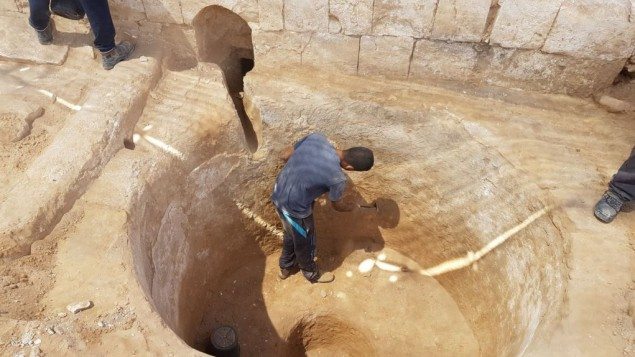Date£º
2017-07-27 10:10 Source£º
www.thedrinksbusiness.com Author:
Rupert Millar Translator:
Israeli archaeologists near the southern city of Beersheba have uncovered a rare early Byzantine wine press capable of producing over 8,000 bottles of wine.

The scale of the wine press at Ramat Negev is clear from this picture. It could hold around 6,500 litres of freshly pressed juice. Photo credit: Israel
Development work near the offices of the regional council buildings in the Ramat Negev settlement, south of Beersheba, led to workers uncovering part of an ancient structure.
As all archaeological sites are protected in Israel the Israeli Antiquities Authority (IAA) was called.
The IAA team soon discovered that the structure was in fact a wine press of considerable size and dating to about the 4th century AD, so right at the beginning of the Byzantine era (which is generally held to start in around 330AD), and one of the earliest yet discovered in Israel.
The press seems to have been housed in a larger building, only one other press of this type has been found before in the Negev making it quite unique.
The pit into which the runoff juice was collected is two metres deep with a diameter of 2.5 metres meaning it could hold 6,500 litres of wine, the equivalent of more than 8,600 modern 0.75cl bottles.
The sheer scale of the production suggests two things. Firstly, that the press was probably connected to a local Roman army unit and supplied their wine ration or the winery was producing a lot of wine for export.
(https://www.thedrinksbusiness.com/2017/07/byzantine-wine-press-discovered-by-accident/)